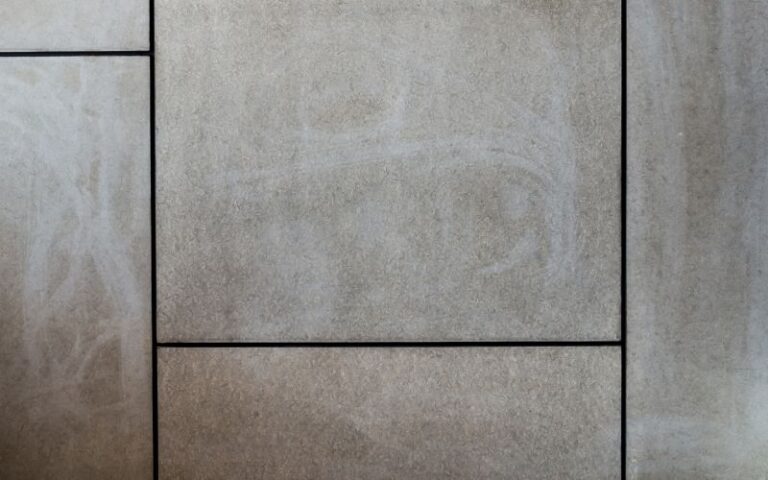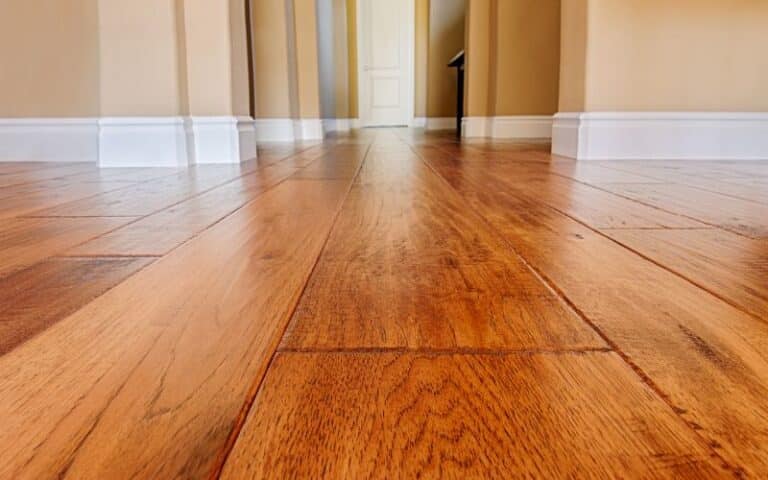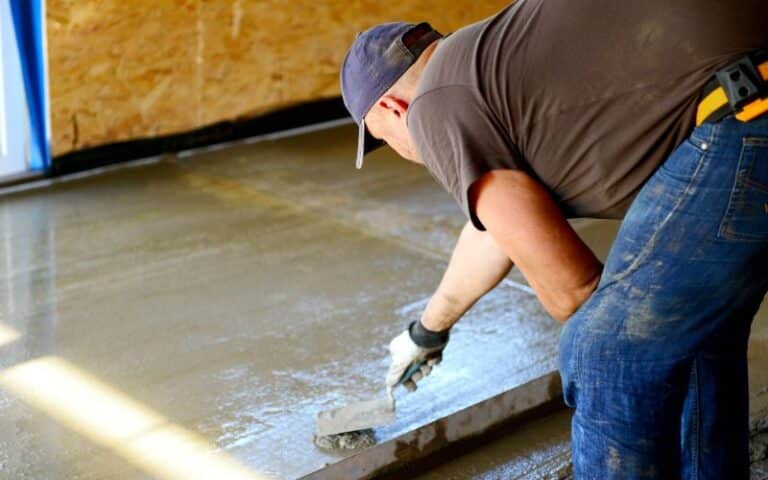Are you dealing with an uneven floor in your home? If yes, this can be an eyesore and a safety hazard.
You may need to level the floor when working on a renovation project. This, sistering joists is a relatively straightforward process and one of the most effective ways to level a floor.
So we’ll discuss what sistering joists are, when you should use them, and how they can help level your floor.
Sistering joists is a great way to level out a sagging floor. This method involves adding a new joist next to an existing one and connecting them. Doing this not only helps to reduce bounce but also strengthens the floor for heavier objects. Sistering joists will fix various floor issues and save you money in the long run.
This article will explain if you can use sistering joists to level uneven floors when to use them, and the problems with using them. Also, I’ll explain alternatives to use instead of sistering joist.
By the end, you’ll know when to use sistering joists when flooring and the problems you can encounter using them.
Ready for a Flooring Quiz?
Can You Level Uneven Floors by Sistering Joists?

Yes, you can level uneven floors by sistering joists. This process involves attaching a new joist to an existing one to increase its load-bearing capacity.
You install your new joist next to the old one, using construction adhesive with screws or nails securing them together.
You use sistering joints when the existing joists are damaged, sagging, or undersized.
It can help reinforce the structure and provide additional support by attaching new lumber alongside them.
Adding more support to the existing joist can better distribute the weight of the floor, resulting in a level surface.
It is also a common solution when leveling a floor that has settled or becomes uneven over time.
To sister joists, you must identify the problem areas and measure the length of the lumber required to reinforce the existing joists.
The new lumber should be the same dimension as the original joists for optimal results.
Contractors and DIY enthusiasts commonly use sistering joists to address uneven floors. It’s important to note that sistering joists work best for only slightly uneven floors.
Sistering joints is not always a guaranteed solution and may not be appropriate for all flooring situations.
If the floor has major structural issues, it may be necessary to consult a professional contractor for a more extensive repair.
For instance, you should consider factors like the age, condition of the existing joists, level of unevenness, and installed flooring type before attempting sistering joists.
Sistering joists can effectively level uneven floors and prevent further sagging or damage. We’ll look into sistering joists’ pros and cons so you can decide if you want to use them.
The table below will show the pros and cons of sistering joists to level uneven floors:
| Pros | Cons |
|---|---|
| It is cheaper than replacing the entire floor. | If the problem is severe, the sistering joist won’t fix the issue. |
| You can preserve the existing structural integrity. | It can be time-consuming. |
| It is durable and can withstand wear and tear. | Improper installation won’t solve the problem and can further damage the floor. |
| It is easy to install a sistering joist yourself. | It may not be suitable for all floor types. |
| It adds additional support to the floor. |
However, it’s essential to identify the underlying cause of the unevenness to ensure a long-lasting solution.
In some cases, sistering joists may be necessary to ensure the structural integrity of a floor, while in others, alternative methods may be more effective.
If the issue persists or worsens after sistering the joists, addressing other underlying issues, such as moisture damage or structural deficiencies, may be necessary.
It is important to consult with a professional before attempting any flooring repair to ensure you use the most appropriate solution.
When Should You Use Sistering Joists in Flooring?
Sistering joists can be a helpful solution for leveling an uneven floor.
Generally, you install sistering joists when the existing joists are structurally sound but may have some slight sagging or warping that causes an uneven floor.
Uneven floors can be not only aesthetically displeasing but also a safety hazard.
Sistering new joists can help redistribute the weight and create a level surface, eliminating tripping hazards and improving the overall stability of the floor.
You can also use a sister joist when the existing joists are undersized or damaged. Over time, joists may weaken due to rot, pest damage, or excessive weight loads.
Sistering new joists alongside the existing ones can provide additional support and strengthen the floor structure.
If the joists are damaged or rotting, sistering alone may not address the problem, and additional structural repairs may be necessary.
Before beginning any repairs, it is important to determine the cause of the unevenness in the floor.
Common causes include settling, moisture damage, or a lack of support beneath the subfloor. If you do not address the cause, sistering joists may only be a temporary solution.
You can use sistering joists to reinforce existing ones and prevent future sagging or warping. It is particularly useful in older homes or structures with long spans between supports.
It’s also important to consider sistering joists when remodeling or adding extra weight to a floor.
For example, sistering the existing joists can help prevent sagging or flexing under the new load when installing a heavy tile or stone floor.
Ultimately, the decision to use sistering joists will depend on the specific circumstances of your flooring issue.
Consulting with a professional contractor or structural engineer so they can help identify and execute the best solution is important.
They can assess the condition of your existing joists, evaluate the feasibility of sistering, and provide guidance on the appropriate materials and installation techniques.
5 Common Problems with Sistering Joists in Flooring
Sistering joists are a popular method to level uneven floors, but it has its fair share of potential problems, like any solution.
Here are five common problems that can arise when sistering joists in flooring:
#1. Inadequate Support
If the sister joists are not properly attached and supported, they may not provide enough structural stability, leading to continued sagging or bouncing on the floor.
It is crucial to ensure that the sister joists are securely fastened and supported by proper hardware, such as joist hangers or steel plates.
#2. Incorrect Sizing
Using improperly sized sister joists can cause further issues. If the sister joists are not the same size or thickness as the existing joists, it can create an uneven and unstable surface.
It is essential to carefully measure and match the size and thickness of the existing joists to maintain a level floor.
#3. Insufficient Spacing
Sistering joists require proper spacing for adequate support. Placing the sister joists too far apart can result in an unevenly distributed load, leading to further floor problems.
Follow the proper spacing as recommended by building codes and guidelines.
#4. Hidden Underlying Issues
Sistering joists may address the visible problem of an uneven floor, but they may not resolve underlying issues such as moisture damage or deteriorating subfloor.
Inspecting and addressing underlying issues before sistering joists is important to ensure a long-term solution.
#5. Lack of Professional Guidance
Sistering joists is not a simple DIY project for inexperienced individuals. It requires knowledge of structural engineering and an understanding of building codes.
Making mistakes that can worsen the problem or pose safety risks is easy without professional guidance.
While sistering joists can effectively level a floor, awareness of these common problems is crucial. So you can take the necessary precautions to ensure a successful and durable outcome.
Consult a professional contractor or structural engineer to ensure you do the sistering process correctly and safely.
4 Alternatives to Sistering Joists for Leveling Floors
While sistering joists can effectively level a floor, alternative methods may also work, depending on the situation.
Here are four alternatives to consider instead of sistering joists:
#1. Shimming
One option is to use shims, or thin wedges of wood, to fill any gaps between the floor and the joists. That can help to even out the surface without requiring additional support.
#2. Self-leveling Compound
Another option is to use a self-leveling compound. It is a liquid material that can be poured over the floor and will then settle to create a smooth surface.
It can be a good choice for small or medium-sized areas that need leveling.
#3. Subfloor Replacement
In some cases, it may be necessary to replace the subfloor altogether to level the surface.
Although it can be a more extensive and expensive solution, it might be the best choice if the existing subfloor is damaged or compromised.
#4. Steel Plates Reinforcements
Reinforcing your joists with steel plates will work if the joists are still structurally sound but with minor deflection.
The steel plate will increase the joist stiffness and load-bearing capacity and reduce deflection.
Ultimately, the best method for leveling a floor will depend on the specific situation and the underlying cause of the unevenness.
It may be helpful to consult a professional to determine the most effective approach.






